“It was as if they had so much time,” commented Cerbrina, one of our tour guides, as she described the Carved Olive-stone Boat while the rest of us were busy having our minds blown by the tiny yet impressively intricate art piece.
“They didn’t have Facebook then,” responded Fitz, a blogger who was also with us on the tour. Everyone chuckled. At that moment, one of the museum’s ushers announced that we could already proceed into the room holding that centuries-old gem.
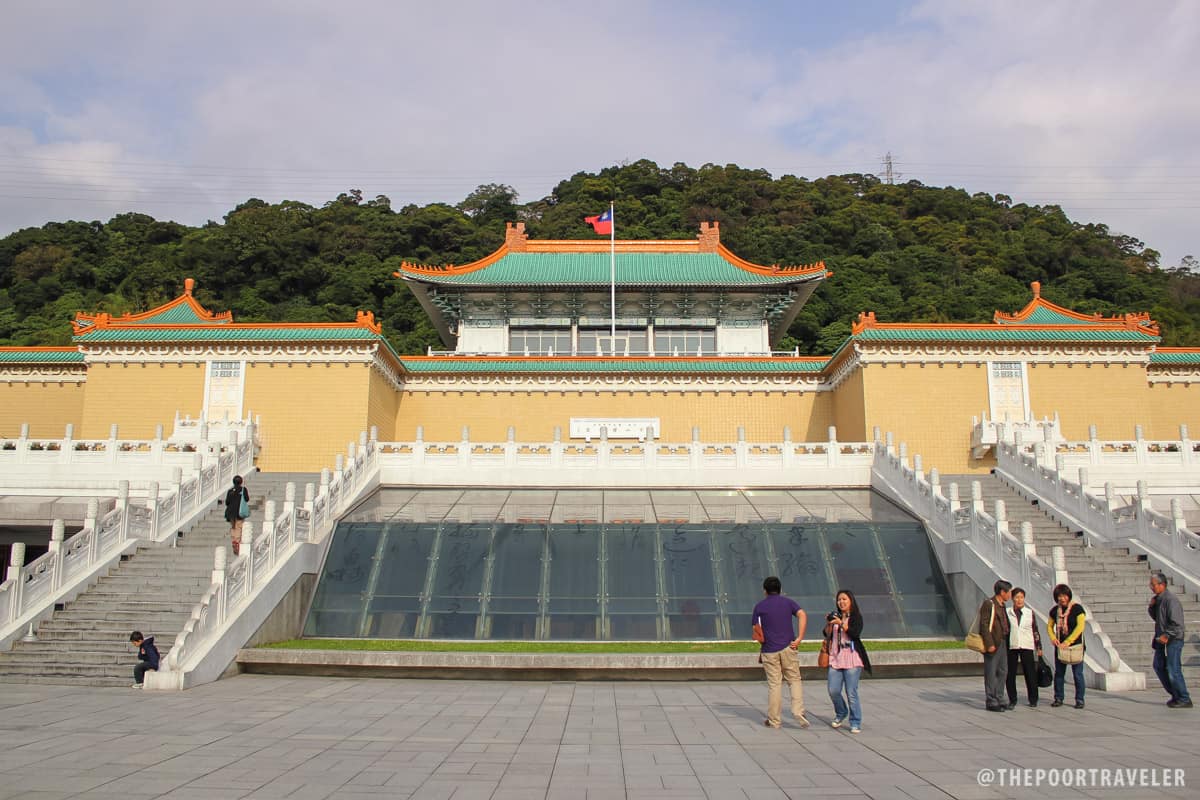
The Taipei National Palace Museum
The Carved Olive-Stone Boat is just one of the hundreds of thousands of pieces housed in the Taipei National Palace Museum. In fact, it contains over 650,000 objects and only a mere 1% of it is displayed in the main museum. The rest is kept in heavily guarded, temperature controlled vaults in the nearby mountains that only a few staff members have access to. It’s a collection so vast, almost unimaginable, that includes 6000 bronze pieces, 3000 calligraphy works, and thousands and thousands of pieces of gems, carvings, and textiles among others. To think that this is just a fraction of the bigger collection kept at its namesake, Palace Museum at the heart of Forbidden City, you can imagine how massive Beijing’s assemblage is.
How it got to Taipei is a long, long story enough for a full history class. But the short of it is this: In 1931, in fear that these pieces would fall into the wrong hands after the Imperial Japanese Army had conquered a strategic area in North China, Generalissimo Chiang Kai-Shek ordered that the most prized pieces be prepped for evacuation. Within the next 10 years, the thousands of crates carrying these treasures had been moved to Shanghai, to Nanjing, and then to the Sichuan Province as the Japanese forces advanced farther inland.
When the Sino-Japanese War and World War II were over, the chaos in mainland China did not stop. The Chinese Civil War resumed and the conflict between the Nationalists and Communists pressed on. Chiang Kai-Shek decided to send the most important items of the collection to Taiwan. The rest remained in the Palace Museum in Beijing, which was already controlled by the Communist Government.
Inside the National Palace Museum
The National Palace Museum in Taipei is the 7th Most Visited Museum in the World, and it is very evident as soon as you step into the museum grounds. It was a Monday when we visited and despite the vastness of the place, it was packed with tourists from around the world, mostly from mainland China. We had to endure more than an hour of queuing. While other sections of the museum were easy to explore, the exhibits displaying the most mind-blowing artifacts ate up so much time and energy just waiting for our turn.
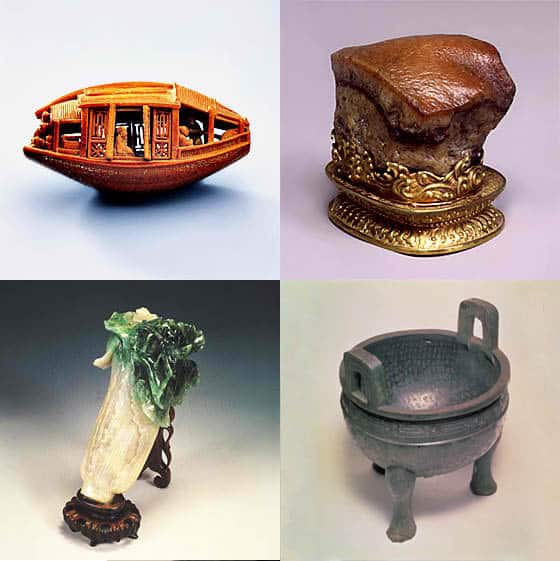
Here are some of the most prized Chinese cultural and historical artifacts that the museum boasts:
- The Carved Olive-Stone Boat. An unbelievable intricate carving from olive stone that definitely required a lot of time and dedication from a highly skilled artist. It is so small, just the size of, well, an olive, that a magnifying glass is needed to appreciate it fully. Yet, it was meticulously and ingeniously carved to resemble a full boat complete with 8 people inside, chairs, table, and dishes. And get this, the windows are completely moveable!
- Jadeite Cabbage. The museum is home to thousands of jade items but the most popular is probably the Jadeite Cabbage. As you might have guessed from its name, it is a jadeite carefully and cleverly sculpted to into a small cabbage head. The artist used the natural color of the stone in making this convincingly lifelike wonder.
- Meat-shaped Stone. Another small piece of gem masterfully carved into the shape of a Chinese food favorite is the meat-shaped stone, made from jasper stone. The artist used the lines of the gem as the morsels of a cooked chunk of pork.
- The Bell and Cauldron Inscriptions. Bronze was treasured in Ancient China because they somehow resemble gold and they were used in the “Culture of Rites and Music,” considered as the “paragons of cultural institutions” during the Three Dynasties (2070-221 BC). Two of the important artifacts from this era showcased inside the museum are the Zong Zhou Zhong (Bell of Zhou) and Mao Gong Ding (Cauldron of Duke of Mao).
These are just five of the hundreds of thousands of precious cultural artifacts that the National Palace Museum keeps under its care. Photography is not allowed inside the museum so I wasn’t able to take photos of anything inside. Outside, though, it was a different story. We had a great time camwhoring at the front white gate!
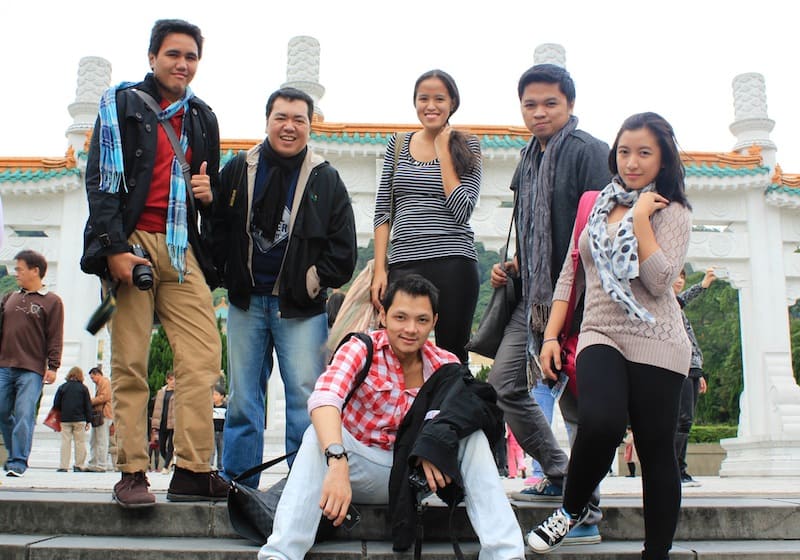
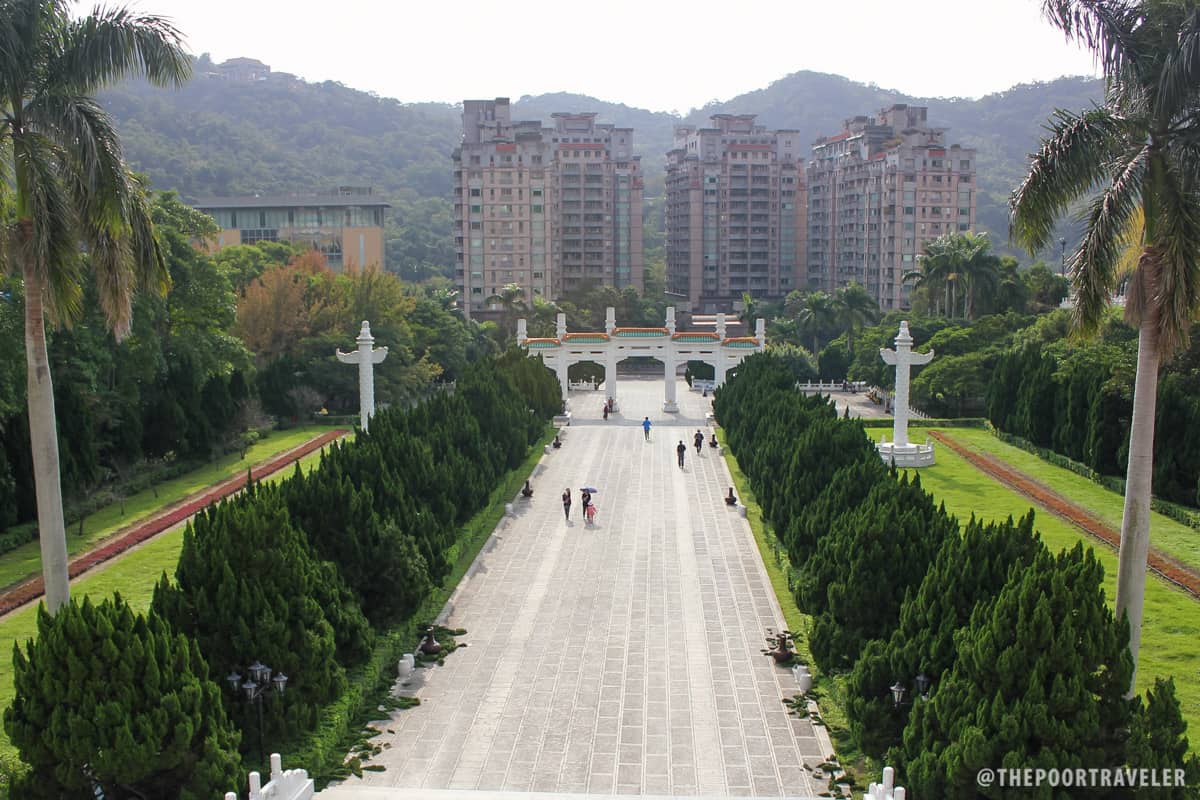
While only a small fraction of the collection is open to the public, one look at these facets of the great ancient Chinese civilization and their long history truly triggers an intense desire to see more and more and more. Heck, I’m not even Chinese but I would like to see more. I want to see ALL of it!
But alas, given the size of the collection and only 1% can be displayed at once, it would take over a hundred years to exhibit all of these treasures at the museum. I’m afraid I don’t have that much time.
Posted: 2012 • 12 • 29
National Palace Museum
Taipei, Taiwan
www.npm.gov.tw
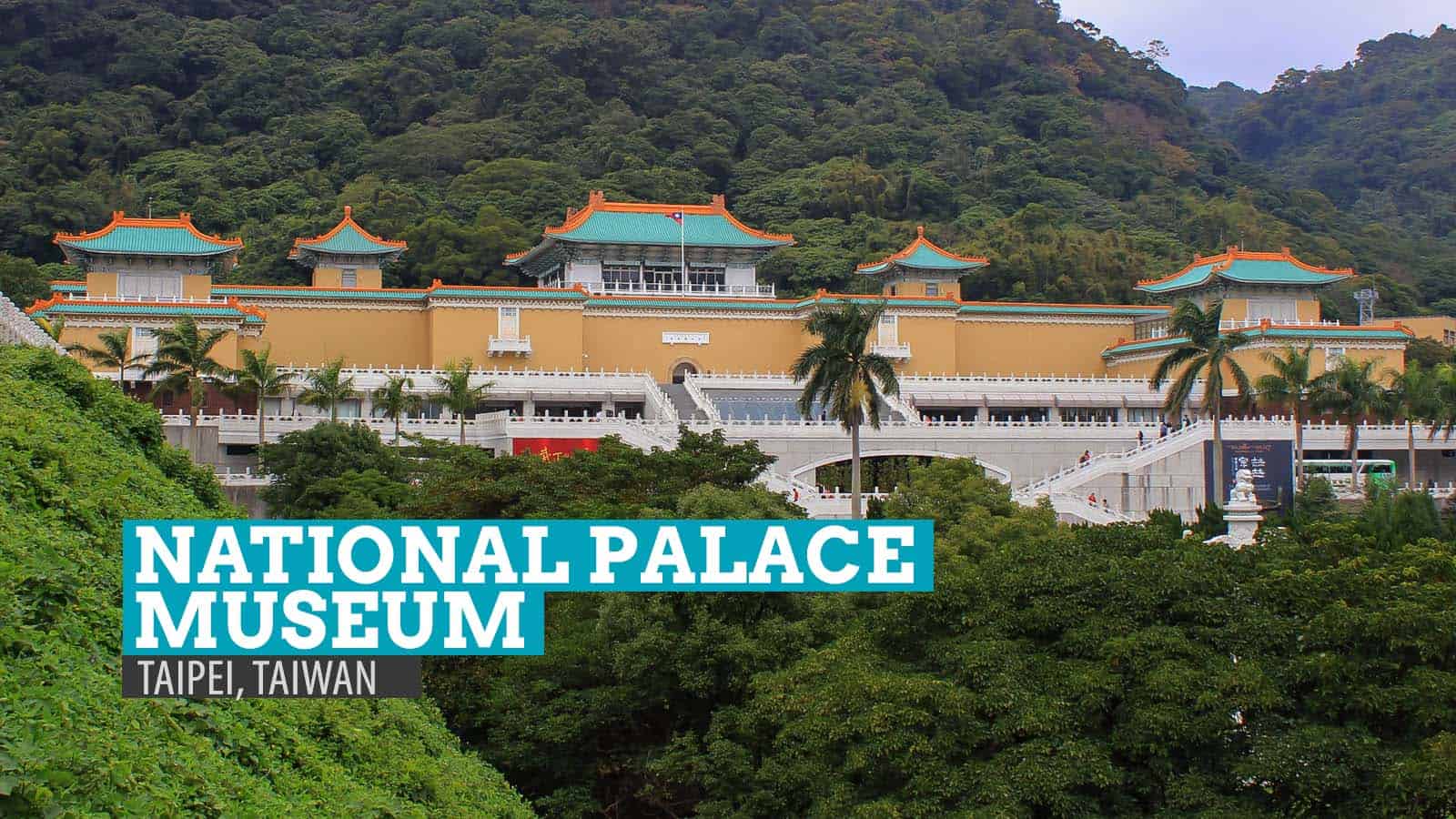

























Is there a visa requirement in Taiwan for Filipino nationals who will go there on tour for less than a week?
Yes there is. :) You’ll have to apply for a single-entry visa from the Taiwan Embassy at the RCBC building in Makati.